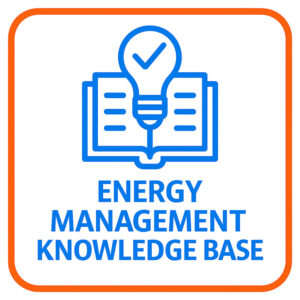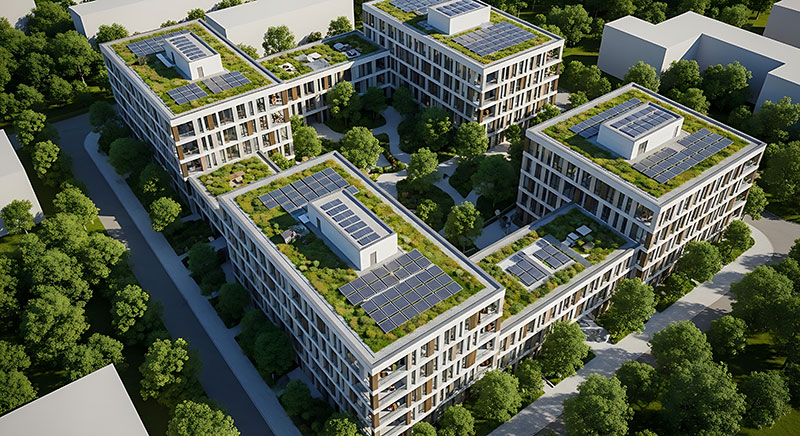The world is increasingly being powered by solar and wind, and switching to use Inverter-Based Resources to leverage these renewable energy sources.
As the transition ramps up, the need for reliable and efficient power quality monitoring and fault recording is increasing as well. Both are relevant, for system performance as well as regulatory compliance.
For facilities in need of a solution that kills two birds with one stone, the SATEC PM180 is the answer. This device provides high-performance power quality monitoring with IEC 61000-4-30 Class A measurements and advanced fault recording with an integrated Digital Fault Recorder (DFR).
Built on a flexible modular design that supports Modbus TCP, IEC 61850, and GOOSE messaging, the PM180 is built to ensure grid stability and fulfil requirements from renewables, all while providing vital information regarding system performance and faults in real-time.
Find out how the SATEC PM180 ensures accurate power quality monitoring and fault recording in inverter-based resources:
PM180: Dual-Purpose Power Quality Monitoring and Digital Fault Recording
The SATEC PM180 is an all-in-one device that combines Class A power quality measurements with capabilities for a Digital Fault Recorder (DFR) and is designed explicitly for renewable energy applications.
Real-time, accurate monitoring of steady-state power quality and transient fault conditions ensure that Inverter-Based Resources (IBR) meet power quality regulations while optimising system performance.
Key Features of the PM180:
- IEC 61000-4-30 Class A Compliance: The PM180 ensures power quality parameters for voltage, harmonics, and frequency measurements are accurate and in detail, making it an indispensable instrument for Inverter-Based Resources (IBR) and renewable monitoring.
- Digital Fault Recorder (DFR): SATEC’s device records high-speed fault events to provide pre-fault and post-fault data needed for speedy fault detection and system diagnosis.
- Modular Design for Flexibility: Easily upgrade with additional modules. The PM180 supports Modbus TCP, IEC 61850, and GOOSE messaging for seamless integration with your existing SCADA systems.
IEC 61000-4-30 Class A - Power Quality
IEC 61000-4-30 is the international standard that outlines how alternating current (AC) power supply systems must measure and interpret results. Power quality monitors that are certified as compliant with this standard have provided reliable, repeatable and reproducible data.
It is one of the most crucial standards in keeping power quality high in renewable Inverter-Based Resources (IBR) systems. These are meters tested to the highest accuracy for the measurement of power quality parameters—voltage, current, harmonics, and flicker.
The Importance of Class A Compliance
- High Accuracy: Class A meters make the most accurate measurements possible, enabling compliance with the stringent international power quality standards of the grid to be able to accept renewables.
- Long-Term Power Quality Monitoring: The PM180 captures all the key power quality metrics, enabling operators to monitor performance for Inverter-Based Resources (IBR) over time.
- Regulatory Compliance: The PM180 is IEC 61000-4-30 Class A certified, enabling operators to meet necessary regulatory standards specified by AEMO, thus ensuring compliance throughout the grid.
Digital Fault Recorder (DFR) & Fault Detection
While IEC 61000-4-30 Class A takes care of steady-state power quality, the PM180 embedded Digital Fault Recorder is designed to capture real-time fault events for detailed analysis and faster disturbance recovery.
Features of PM180’s Digital Fault Recorder
- Real-Time Fault Detection: The PM180 Digital Fault Recorder captures fault events thanks to a high sampling rate and record detailed pre-fault and post-fault data for deep data analysis.
- Transient Event Analysis: The DFR can identify short-lived disturbances like voltage dips and swells, and faults, and thus be able to take quick actions with minimal system downtime.
- Distance to Fault Calculation: An operator can quickly and accurately determine where the fault is in order to reduce recovery time and increase system reliability.
Advanced Alarming Notification for SCADA
PM180 hosts advanced alarm management capabilities with the Modbus TCP feature, making it capable of integration with SCADA in renewable energy domains. Any deviation from ideal power quality or fault events is notified in real-time to the operator.
Benefits of Modbus TCP Alarming
- Instant Notification: Users receive real-time notifications on power quality issues, faults, and other system performance anomalies using Modbus TCP.
- Customisable Alarms: The operator can easily define very accurate monitoring of IBRs with very precise thresholds for all critical parameters such as voltage, current, or harmonics.
- Remote Monitoring and Control: The PM180 enables remote monitoring and control of PM180 by interfacing it with SCADA, which consequently improves operational efficiency and response times.
IEC 61850 and GOOSE Messaging
For seamless integration into substation automation systems, the PM180 supports IEC 61850 and GOOSE messaging. These protocols are developed at industry-standard levels and hence provide a fast and highly reliable form of communication between devices to ensure efficient operation in Inverter-Based Resources and renewable energy systems.
Key Features of IEC 61850 and GOOSE Messaging:
- IEC 61850 for Substation Automation: The PM180 provides support for IEC 61850, where it enables the device to get integrated with other substation devices for automated control and monitoring.
- GOOSE Messaging for Ultra-Fast Response: Time is everything in high-speed protection relays or in response to faults in IBRs.
- Interoperability: The PM180 could operate using IEC61850 and GOOSE simultaneously, allowing its use along with a wide range of equipment in very dynamic and complex systems for energy generation.
IEC 61000-4-30 Class A with DFR Integration for All-inclusive Monitoring
The PM180 is unique in that it can combine IEC 61000-4-30 Class A power quality monitoring with Digital Fault Recorder (DFR) data. It serves as a dual feature tool for the user—one for the monitoring of steady-state conditions, and the other for the transient events in renewable IBR systems.
How Class A and DFR Work Together
- Continuous Monitoring with Class A: IEC 61000-4-30 Class A is a long-term monitor for power quality metrics like voltage and harmonics; it would ensure Inverter-Based Resources perform well and are in demand.
- Event-Based Fault Detection with DFR: The DFR will capture specific fault events, such as voltage sags or short circuits, to provide detailed insight into the system disturbance. Together these instruments provide a comprehensive view of steady-state performance and fault events.
Advantages of Dual-Purpose Monitoring for Inverter-Based Resources (IBRs)
With insights into steady-state performance and transient faults, the PM180 helps optimise system operation to ensure grid stability and maintain compliance with international Standards. The fusion of IEC 61000-4-30 Class A power quality monitoring with DFR fault recording in the PM180 delivers the following advantages to operators of renewable energy systems:
Key Advantages
- Improved Grid Stability: Power quality and fault recording attributes help guarantee Inverter Based Resource is well integrated into the grid
- Optimised System Performance: Class A measurements with DFR data allow optimisation of the performance where operators can tune them and respond quickly with a fault.
- Regulatory Compliance: The PM180, which is compliant with IEC 61000-4-30 and supports advanced fault analysis, makes sure that all renewable systems are in conformance with regulatory needs from AEMO.
Future-Proof Your Renewable Energy Monitoring with the PM180
As renewable energy systems become more prevalent and more complex, a robust monitoring solution is essential. The SATEC PM180 features a dual-function monitoring system that combines IEC 61000-4-30 Class A power quality analysis with Digital Fault Recorder (DFR) functionalities.
Advanced alarming is supported over Modbus TCP, IEC 61850, and GOOSE messaging, making the PM180 easily integrated within SCADA systems and substation automation. The PM180 also includes all the tools needed by an IBR or renewable system operator to help ensure optimal performance, operations and compliance with regulatory standards.
SATEC is the trusted name for power quality monitoring and fault recording solutions. Contact us for more information about the PM180 today.





